This was written in 2004 by our Fly Fishing columnist John Papciak. Seven years later not much has changed. In a lot of ways , that is why we are posting this. Becouse of the video, talk on gamefish is all the rage…yet not much has changed
Zeno
By John Papciak
Written Nov 2004
Visions of the Pre-Moratorium Days “ The Nets Are Back”
Saturday November 19. I set out to introduce a couple of guys to surfcasting on the east end of Long Island. We did some boat fishing earlier in the day, but they really were more interested in seeing what the striper surf was all about. It’s been a tough fall, the slowest in years, but on this day they got their wish, and then some. That afternoon, just west of Indian Wells Beach in Amagansett, juvenile “peanut” bunker were being chased by schoolie bass into the shallows. A day in surfcasting heaven – a beautiful day, miles of pristine beaches, gulls and gannets diving, fish breaking, peanuts in the trough, and tight lines for all.
They actually got to see more of the east end’s fishing culture than most surfcasters trekking to Montauk ever do. On this day, an East Hampton “haul seine” crew was in operation. The crew – looking like they had stepped right out of John Cole’s book Striper – consisted of about 6 trucks, 8 men, a dory, and a gill net that stretched at least a half mile out into the Atlantic.
We were just in time to see the nets coming in. On the sand lay hundreds of fish. There were bass, many much larger than anything we had caught and released in the blitz. There were many shorts. Next were bluefish by the dozens. There were also fish that I never thought would be out there chasing peanuts in the surf at this time of year, including fluke. Everything, regardless of size, looked dead or close to it. As the net came in (pulled by a winch on a trailer) the fish were sorted into piles. The total haul looked impressive. I stopped the truck to get a first-hand look, a sort of a morbid fascination with what was taking place.
“Is this legal?” my companions asked in a doubting voice. I just shrugged my shoulders. It would have taken me hours to try to explain the politics of it all, and this was not the time, nor the place. I have witnessed beach gillnetting for a couple of years now. I get the “How could this be legal?” question often these days, but I continue to struggle with the answer.
“Haul Seines,” which are launched from the beach, were banned in New York during the moratorium, though they are still used to conduct the annual striped bass stock assessments for the NY DEC. “Gill nets,” on the other hand, are legal.
Never mind the definition, the nets are back.
After years of glowing stock assessments and steady increases in quotas on both the recreational and commercial sides, I suppose it was only a matter of time before some altered version of beach netting was attempted. Perhaps the politics of the “haul seine” was too much of an obstacle. It was probably easier to simply find a way to launch a gill net from the beach. Well, kudos, they figured it out. The genie is out of the bottle.
A couple of surfcasting buddies, offended by the kill, offered to take pictures. “Who are you going to send the pictures to?” I asked. “Who is in a position to do something about it?”
To be fair, I suggested to one buddy that he could get the same image by emptying a dumpster at one of the big Montauk sport fishing marinas after a good day. A picture of a huge pile of dead fish looks the same, no matter who did it.
In fact, these boats target larger fish, prime breeders in many cases, whereas the netters target fish in the 24 to 36 inch slot. You can debate yourself silly over which sector is doing more damage. Both are doing plenty.
The most recent stock assessment, issued earlier this month, had recreational and commercial sectors combining to produce a kill way above a pre-agreed “target,” and just a hair under an absolute ceiling known as “overfishing.” Overfishing indicates we are at greater risk of a collapse. Where were the calls for caution? Not a word from most of the recreational advocates. Many were too busy with their slice, with not a word of concern over what might be happening to the size of the overall pie.
What’s next? Bigger nets? A more favorable allocation, which might make beach netting more economically viable? This, in turn, might mean more crews launching nets from the beach?
My biggest concern of all – Who has the credibility to raise an opposition?
NY officials, no doubt influenced by recreational special interests, by-passed the public this spring and put in “emergency regulations,” giving recreational fishermen a second bass (despite years of overwhelming public opposition expressed at various hearings). To the south, NJ advocates are busy with a law to allow 3 @ 28, and they justify this legislation by saying they feel the stocks are in good shape. To the north, Mass is still fixated with opening the EEZ.
I hate to say it, but based on all this gluttony and self-interest, you can hardly blame the East Hampton Baymen (who have reportedly been at this for generations) for finding a way to get their nets back in the water.
[issuu width=550 height=213 shareMenuEnabled=false showHtmlLink=false printButtonEnabled=false shareButtonEnabled=false searchButtonEnabled=false backgroundColor=%23222222 documentId=111107121711-3cac58ff79b34f758cc454049c5db7bb name=sj10 username=surfcasters_journal tag=bluefish unit=px id=f16ef013-6992-07c6-12ee-99afb7e98c66 v=2]

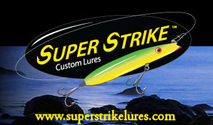

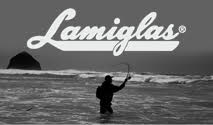


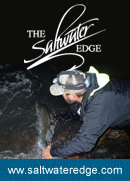
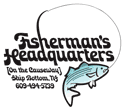

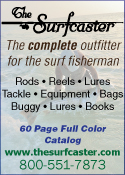


Well said Z. The blog title says it all. Sometimes I dont know what to think anymore despite my strong opinions……
↓….Catch and release is really all I know for sure.
Well apathy isnt the answer.
↓It surely is sonmething to be considered if we are not good stewerts of the the thing we have been given then eventually they are gone. All fishing has a purpose food, recreation, employment, but without balance we all feel the effects and leave nothing behind for those who follow.
↓Florida’s version of the East Hampton Baymen attempted to do the same ‘ring around the rosy’ with substituting seine type netting for gill nets. It did not work in Florida and should have not worked in East Hampton. I have viewed the haul seine fishery along the Outer Banks of North Carolina for over 60 years and most plying that trade now are part timers suplimenting their regular incomes. In North Carolina the haul seiners have a number quota for striped bass. When they pull a net..which usually contains more than their allotment..they call others that have a permit to ‘pick up’ their share of the bounty. This type of fishing is known as the ‘telephone haul’. Most haul seiners in North Carolina nerver pull a net. They sit patiently by the phone.
↓I said it before and I echo it now. Words are just words. Action is needed. we worked as a loud voice of outrage when we were asked to pay for a Saltwater license. We managed to change that if only temporarily.
↓Call your congress men both state and federal. Write them, e-mail them. Let them know how you feel. Every voice heard from equals 500 voices to a politician.
For politicians who apposed the license, we already have their ear.Shout into it.
Make change happen by more then writing how much we hate it here. (no offence Z. I love this blog and the mag.)
It doesn’t cost you a thing but a few moments to drop them a line to let them know how you feel.
I thought this kind of fishing was only done in Europe nowadays…
It took a long time but French, Italian and Spanish pretty much destroyed 99% of the fishery with a slow and steady overfishing, add some intense spearfishing, and this is it.
Go on the “riviera” and snorkel – All you’ll see is an empty sea!
Let’s really hope that measure will be taken before it’s too late
↓woodwker..not all of us were in favor of rolling back saltwater licence
↓Pierre..forget Europe
↓that kind of devastation is not possible here. I see it every time i go back home. People here are much more sensitive to what is going on in the air/water than back home.
The bottom line is that if you want to make a change, you’re going to have to take the time to get involved, and understand that you’re in for the long haul. Get used to the fact that you’re not going to win every fight. You very well may not win most of them But if you insist on your place at the table, and make it clear that you will not go away in a few months or a few years, you’ll start to win a few.
Fifteen years ago, NY anglers used to fill hearing rooms to standing room only. Back in ’95-’96, we insisted that we wanted 1 fish @ 36″. We didn’t get it, but did manage 1 insread of 2 @ 28″. Yes, the for-hires got 2, but we still kept mortality down a little more than it would have been; we kept 2 @ 28 from happening.
But then most of the anglers went away (many to kill the same 28″ fish that they had claimed not to want at the hearings), but the industry voices who wanted to kill more fish stayed at the table, and in 2004-05, they got aecond fish, under NY’s new “1 under, 1 over” rules. Endurance prevailed.
In 2010-2011, commercials almost got a quota increase at ASMFC, because they ask for it every year. Anlglers woke up late, but they finally woke up, and beat it back last February. Here in NY, trawlers kept creeping toward a directed bass fishery, going from a prohibited gear to 7 fish in ’97 to 21 fish in ’05 until they made a run at dropping all trip limits last year. Again, anglers woke up, and a handful managed to push back the effort, but only after a Marine Resources Advisory Panel committee was constituted to investigate the matter–and that committee was almost combined with another commercial committee that might have forced a very different outcome. Expect the trawlers to stay at the table and keepo trying. Maybe the anglers will be out to lunch next time…
Last weekend, I was at a 2-day Mid-Atlantic Fishery Management conference in Baltimore. The whole point of the conference was to get anglers more involved in the process, because they recognize that the commercials and the angling indusry show up and make their voices heard, but that the private angler does not. Managers are willing to listen, but anglers–regular anglers, and not just folks like me who represent organizations–need to be at the table if they want to be heard.
Organizations are good for organizing data, getting the word out, devising an advocacy strategy, etc. That’s why I am so active with the Coastal Conservation Association. But in the end, organizations can only do so much. No one can represent your interests as well as you can.
↓The main point of my essay was to point out that it felt very hard to criticize the commercials when a good portion of the recreational community (or rather industry) was preoccupied with their own fish grab.
The problem with lack of individual rec participation is that the returns are hard to justify. The entire structure of how representation is determined is flawed.
In some types of management formats, you’ve got “recreational” representatives who actually hold commercial fishing licenses. And they wonder why recs aren’t more involved.
Much work to do here.
↓Just for the record I thought it was time for a Salt water fishing license and think it the worst thing we (the fishing community in NY)could have done is rile against it.
↓From someone who is still learning more everyday, Thank you John and Charles for the great posts/contributions.
↓